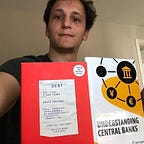Arguably, the most important success measure of THORChain is how productive the circulating Rune is. In this post I will visualize the productive Rune vs Speculative Rune.
What you see below is the current supply breakdown of all Rune that will ever exist. Each segment’s area is proportional to corresponding actual current Rune supply (= USD value)
Let’s take a look at each segment in detail and analyze how they can grow or shrink relative to each other to better understand the dynamics in play.
Pooled Rune
Pooled Rune is the single most important measure of THORChain. Everything else is there to make it safely grow.
It is what enables and settles permissionless, trustless cross-chain swaps. Bigger pool means less slippage means more volume. Note that currently Pooled Rune very tiny; it accounts for only 3% of total circulating supply… I like to think of Pooled Rune, as the kid who will (hopefully) grow up to become a superstar and make his whole family super rich:)
Active Bonded
Active Bonded Rune is the sum of temporary deposits that Bonders commit in order to protect the pooled assets and get paid in return.
Standy Bonded
Standby Bonded Rune is the sum of temporary deposits any Bonder wannabe commits to become an active Bonder. Due to TSS the upper limit of active bonders is 36. For safety bonders get churned in&out approx. every 3 days. There will always be some standby bonders waiting to be churned in.
Productive Rune
Productive Rune = Pooled Rune+ Active Bonded Rune + Standy Bonded Rune
Productive Rune can be regarded as Rune held by people who have strong faith in future success of the network. Bonders and LPs lock up today’s capital to earn tomorrow’s Rune. Given the permissionless and anonymous nature of THORChain network, these users most likely consist of CEX/DEX services, market makers, wallet services, aggregators, brokers, retail defi users etc.
Speculative Rune
Speculative Rune has the least friction, simply because it’s not locked somewhere and doesn’t generate yield (no liens or opportunity costs attached). It’s either traded by weak hands or invested in long term by the low time preference hodl gang. Either way the whole network benefits from them. However when Speculative Rune grows too much relative to Productive Rune, it becomes a limiting factor on Pooled Rune’s future growth (more on that later)
Current Productive/Speculative Ratio ≈ 0.25. A year into mainnet, any number below 0.66 would disappoint me and in a best case scenario I believe it can go as high as 2.5.
How can the pool grow?
I said earlier that all that matters is the Pooled Rune’s growth. This can happen in 3 distinct ways;
- Bigger “market share”
Any circulating Rune (Speculative, Active, Standby) can transition into Pooled Rune by free will of market agents.
If we assume that at some point newly released Rune offsets IL a shift from Speculative to Pooled means more people start to value future fees that are to be generated by the pool. Current Productive/Speculative Ratio ≈ 0.25. A year into mainnet, any number below 0.66 would disappoint me and in a best best case scenario it should be able to go as high as 2.5
2. Fees
Reserve is the incentive that Bonders and LPs receive in return of providing and holding on to productive Rune. With each block, the reserve collects the newly released Rune along with all the txn fees generated by the pools. The sum of this income is then payed out to Bonders and LPs.
Reserve distributes this income between bonders and lps according to a formula which aims to bring Active Bonded/Pooled Rune ratio to 2. When current ratio is less than 2, it splits a bigger portion to bonders, when it’s bigger than 2 it does vice versa.
There is a nice feedback loop here. When pool gets bigger, it generates more volume, which results in more fees and makes the Reserve distribution mechanism more effective in recalibrating the ratio back to 2.
Unlike Uniswap which charges a constant 0.3 % fee regardless of swap size, THORChain charges a slip-based fee. As a result low slip swaps result in lower and high slip swaps result in higher fees. I’m personally convinced that this is a better value accrual mechanism than constant fee model.
3. Price Appreciation
THORChain is not a zero sum game. When Rune appreciates against USD, each segment grows along with the whole pie.
Ideal Case
Here is how the supply breakdown looks like in an ideal scenario in future. Needless to mention the new scale which is 100x bigger ;)
Why is the pool not big enough already?
What we call pool right now is a centralizated simulation of everything on Binance Chain. Not trustless, not permissionless, not anonymous, most importantly not native. It necessarily contradicts the very purpose THORChain will be solving in mainnet so any ambitious pool target right now would be pointless imo. Having said that total Pooled Rune is 30–35 mio USD (includes sushi pools) which is already note worthy.
But more importantly, THORChain is now at the end of a multi- year infrastructure development process and very soon it will fully function as a multi-chain mainnet network enabling permissionless, trustless native BTC, ETH & ERC20, BNB & BEP20 swaps. Expect chaos and dream big!
